Official Franklin Variety/Error Thread - New Listings Updated 5/18/2012
Updated 5/18/2012
Scroll to my last post to see the new listings.
I'll be using this thread to post new Franklin listings and other interesting varieties. Feel free to post any of yours in this thread.
Here's a new listing submitted about a week ago from bammed member bushmaster. A very nice 1951 proof tripled die reverse.
PDDR-005 (CONECA DDR-001)
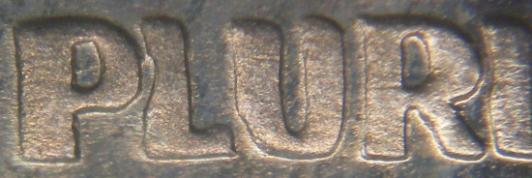

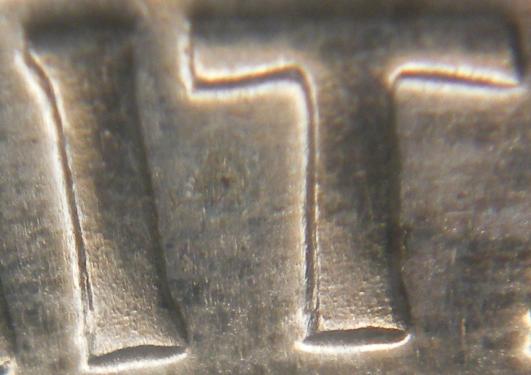
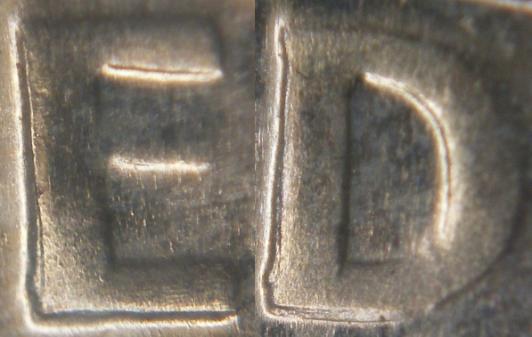
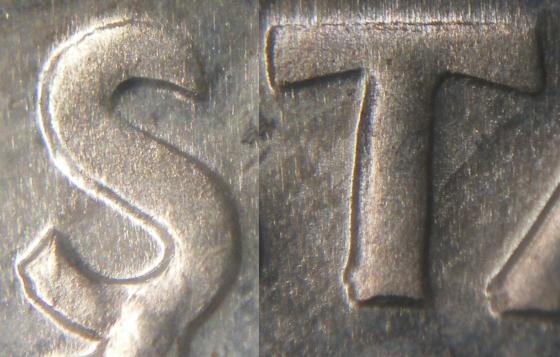
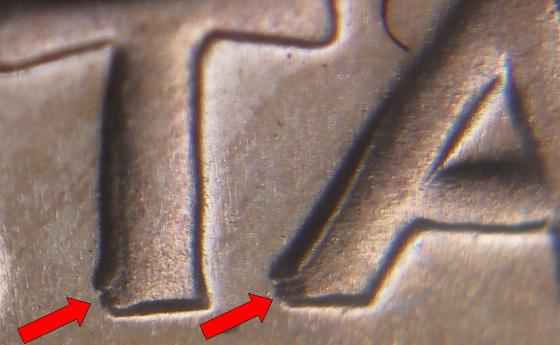
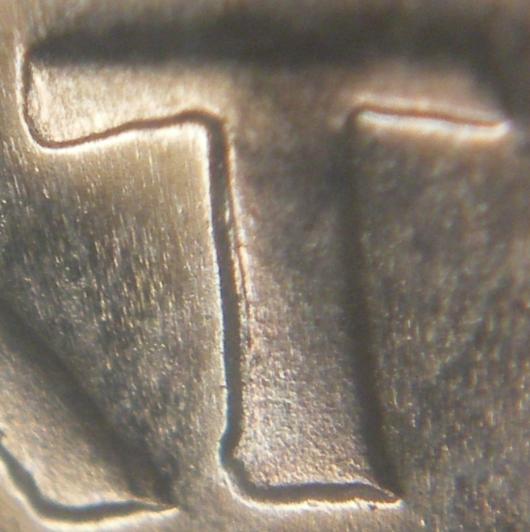
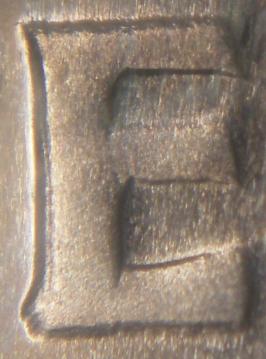
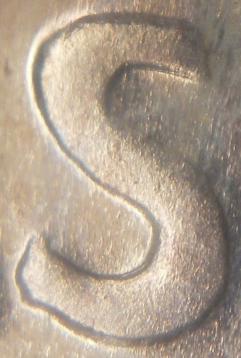
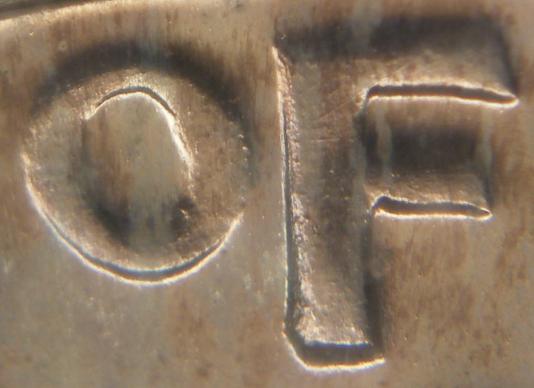
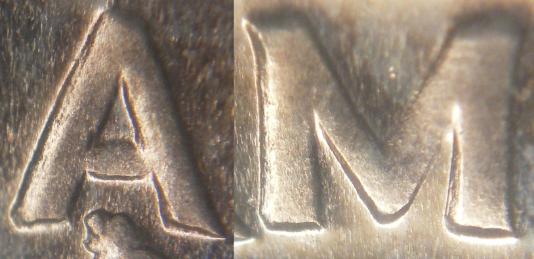
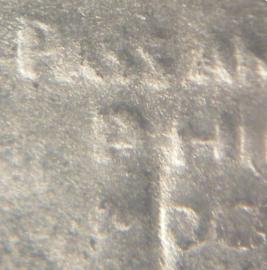
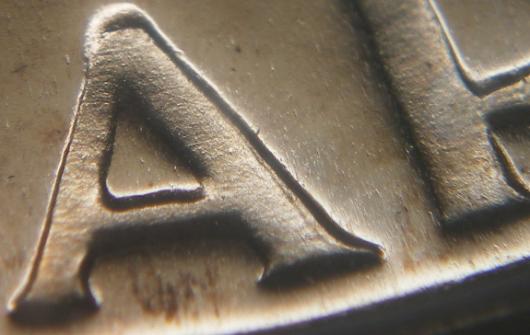
Scroll to my last post to see the new listings.
I'll be using this thread to post new Franklin listings and other interesting varieties. Feel free to post any of yours in this thread.
Here's a new listing submitted about a week ago from bammed member bushmaster. A very nice 1951 proof tripled die reverse.
PDDR-005 (CONECA DDR-001)













0
Comments
To settle the matter I started to keep track of Teletrade offers. After 120 type 1's, a solitary type 2 appeared.
I have been told by Franklin specialists that there are many superb 1958 TPG type 2's. You guys must be hanging on to them tightly.
Does anybody else have any comments on theories on why I found such a disparity?
I have seen similiar disparities in other series, also.
<< <i>is there a certain level of magnification that isn't allowed or disqualifies the coin from being a certain variety or any mag goes.....just wondering? >>
i sure hope not.
scientific study is a big part of numismatics, or at least it has been for me.
as far as i'm concerned, a ddo is a ddo, an rpm is an rpm, etc. regardless of how many degrees ccw-cw/off-center they are.
no comments about value, just the study and attribution.
.
edited for speeling lol
.
<< <i>
<< <i>is there a certain level of magnification that isn't allowed or disqualifies the coin from being a certain variety or any mag goes.....just wondering? >>
i sure hope not.
scientific study is a big part of numismatics, or at least it has been for me.
as far as i'm concerned, a ddo is a ddo, an rpm is an rpm, etc. regardless of how many degrees ccw-cw/off-center they are.
no comments about value, just the study and attribution.
.
edited for speeling lol
. >>
Nicely said! This is how undiscovered error gets discovered. No matter how minute the error is, it's still an error. It is a big part of being a coin collector. Some just like them more than others.
<< <i>I have observed that there is much variation in estimates of per centage of 1958 Philly halves that are type 2.
To settle the matter I started to keep track of Teletrade offers. After 120 type 1's, a solitary type 2 appeared.
I have been told by Franklin specialists that there are many superb 1958 TPG type 2's. You guys must be hanging on to them tightly.
Does anybody else have any comments on theories on why I found such a disparity?
I have seen similiar disparities in other series, also. >>
I rarely see 1958 type 2s in PCGS and NGC holders. Based on the pieces you've tracked on TT it shows that less than 1% are type 2. This is probably a lot closer to the actual percentage of the entire mintage than Breen's estimate of 20%.
Franklin-Lover's Forum
the general, unofficial rule was
that the Die Varieity had to be
seen with no more than a 10x-15x
power magnifying glass.
Obviously, things have changed -
the CPG certainly moved the bar
higher, as far as magnifcation goes.
I have no problem with collectors using
stronger magnifcation; it's how new
varieites are discovered and verified.
Frnklnlvr's pics look about 30X. That's the way varieties are usually documented...check out any good variety reference and you will see similar.
But that is actually a pretty nice spread...not what I would consider a "micro-variety".
I feel sure one could see the spread on the coin in the OP easily with a 7 or 10X magnifier.
"Jesus died for you and for me, Thank you,Jesus"!!!
--- If it should happen I die and leave this world and you want to remember me. Please only remember my opening Sig Line.To settle the matter I started to keep track of Teletrade offers. After 120 type 1's, a solitary type 2 appeared.
I have been told by Franklin specialists that there are many superb 1958 TPG type 2's. You guys must be hanging on to them tightly.
Does anybody else have any comments on theories on why I found such a disparity?
I have seen similiar disparities in other series, also. >>
I rarely see 1958 type 2s in PCGS and NGC holders. Based on the pieces you've tracked on TT it shows that less than 1% are type 2. This is probably a lot closer to the actual percentage of the entire mintage than Breen's estimate of 20%. >>
I think there may be more going on here than we have covered so far.
The 20% number originated with Bill Edwards who was a careful researcher. Perhaps his source was too rich in type 2's. He did identify die cracks from 4 different dies for 1958 type 2's. The 1958 mintage was 4,042,000. 1% of that would be 40,420. 4 dies should have made more than that.
---------------------------------------------------------------------------------
<< <i>
<< <i>
<< <i>is there a certain level of magnification that isn't allowed or disqualifies the coin from being a certain variety or any mag goes.....just wondering? >>
i sure hope not.
scientific study is a big part of numismatics, or at least it has been for me.
as far as i'm concerned, a ddo is a ddo, an rpm is an rpm, etc. regardless of how many degrees ccw-cw/off-center they are.
no comments about value, just the study and attribution.
.
edited for speeling lol
. >>
So lets see if I understand you Lance, if I can see doubling or tripling because I have 100X mag and no one else has a 100x mag thus no one else can detect the doubling/tripling would it still be consider a ddo or rpm by the hobby. I guess it begs the next question, how many numismatists does it take(minimum) to attribute a variety? >>
100x isn't enough sometimes. i prefer 300-500x.
your first question: yes
second: several variables. usually only 1. but in the case of my vam discoveries, 3 seems to be the magic number.
.
I really like this Franklin, but not as well as the people who bid on it. I lost interest when the reserve posted ($10,000).
Franklin-Lover's Forum
Here's my MS64FBL...
Franklin-Lover's Forum
<< <i><<<< I have observed that there is much variation in estimates of per centage of 1958 Philly halves that are type 2.
To settle the matter I started to keep track of Teletrade offers. After 120 type 1's, a solitary type 2 appeared.
I have been told by Franklin specialists that there are many superb 1958 TPG type 2's. You guys must be hanging on to them tightly.
Does anybody else have any comments on theories on why I found such a disparity?
I have seen similiar disparities in other series, also. >>
I rarely see 1958 type 2s in PCGS and NGC holders. Based on the pieces you've tracked on TT it shows that less than 1% are type 2. This is probably a lot closer to the actual percentage of the entire mintage than Breen's estimate of 20%. >>
I think there may be more going on here than we have covered so far.
The 20% number originated with Bill Edwards who was a careful researcher. Perhaps his source was too rich in type 2's. He did identify die cracks from 4 different dies for 1958 type 2's. The 1958 mintage was 4,042,000. 1% of that would be 40,420. 4 dies should have made more than that. >>
Here is some data that may be helpful. This is from the Official Record of Domestic and Foreign Coinage Dies for the year ending 12/31/58 for the US Mint in Philadelphia. Signed by the Assayer and Superintendent.
For US 50c production:
Obverse Dies used: 20
Total Pieces Struck: 4,068,000
Pieces per die: 203,400
Reverse Dies used: 22
Total pieces struck:4,068,000
Pieces per die: 184,909
“In matters of style, swim with the current; in matters of principle, stand like a rock." - Thomas Jefferson
My digital cameo album 1950-64 Cameos - take a look!
Total pieces struck:4,068,000
Pieces per die: 184,909>>
wow! 4,042,000 x .20 / 184,909 = 4.37 dies. 4 dies could have made 20% of the total. Probably the type 2 dies did not last as long. Some did have the die cracks.
This is supported by the peculiar fact that FBL Ty2 business strikes are practically non-existant for 1958. If the proof dies were new when put into business strike service, one would expect the majority of the coins struck from them would be FBL.
This is supported by the peculiar fact that FBL Ty2 business strikes are practically non-existant for 1958. If the proof dies were new when put into business strike service, one would expect the majority of the coins struck from them would be FBL.>>
There is a third possibilty here. Dies destined for proof striking failed proof quality control and rather than being discarded were sent to the regular production line.
What I am curious about is why did they stop with the 1959. The similiar type B quarters continued to 1964.
For example, you never see an apparent ex-proof obv paired with a Ty1 rev and visa-versa.
<< <i>"Hear that music Uncle Jed?! Party's startin"!! >>
Besides the fact that it has been a sad couple of days with the passing of Earl Scruggs, I will offer the following additional data as we mourn here in North Carolina.
Proof Dies 50c:
Obverse
Dies used in coin: 213
Total pieces struck: 1,026,156
Pieces per die: 4,818
Reverse
Dies used in coin: 184
Total pieces struck: 1,016,156
Pieces per die: 5,577
“In matters of style, swim with the current; in matters of principle, stand like a rock." - Thomas Jefferson
My digital cameo album 1950-64 Cameos - take a look!
<< <i>
<< <i>"Hear that music Uncle Jed?! Party's startin"!! >>
Besides the fact that it has been a sad couple of days with the passing of Earl Scruggs, I will offer the following additional data as we mourn here in North Carolina.
Proof Dies 50c:
Obverse
Dies used in coin: 213
Total pieces struck: 1,026,156
Pieces per die: 4,818
Reverse
Dies used in coin: 184
Total pieces struck: 1,016,156
Pieces per die: 5,577 >>
Thanks for posting this info. Do you have the data for 1959 Philly business strikes and proofs?
Strange that the obverse proof dies list 1,026,156 pieces struck but only 1,016,156 for reverse proof dies. Is this a typo?
Franklin-Lover's Forum
<< <i>
<< <i>
<< <i>"Hear that music Uncle Jed?! Party's startin"!! >>
Besides the fact that it has been a sad couple of days with the passing of Earl Scruggs, I will offer the following additional data as we mourn here in North Carolina.
Proof Dies 50c:
Obverse
Dies used in coin: 213
Total pieces struck: 1,026,156
Pieces per die: 4,818
Reverse
Dies used in coin: 184
Total pieces struck: 1,016,156
Pieces per die: 5,577 >>
Thanks for posting this info. Do you have the data for 1959 Philly business strikes and proofs?
Strange that the obverse proof dies list 1,026,156 pieces struck but only 1,016,156 for reverse proof dies. Is this a typo? >>
Yes, I have it, but can't get to it until late today. Will post it then.
“In matters of style, swim with the current; in matters of principle, stand like a rock." - Thomas Jefferson
My digital cameo album 1950-64 Cameos - take a look!
Business strikes:
Obverse Reverse
Dies used: 35 23
Total pcs struck: 6,294,300
Pcs per die: 179,837 273,665
Proofs:
Dies used: 199 183
Total pcs struck: 1,306,756
Pcs per die: 6,566 7,140
“In matters of style, swim with the current; in matters of principle, stand like a rock." - Thomas Jefferson
My digital cameo album 1950-64 Cameos - take a look!
<< <i>It's also a curious thing that you never see the ex-proof and biz strike dies paired together.
For example, you never see an apparent ex-proof obv paired with a Ty1 rev and visa-versa. >>
One thing I've never done is compare the obverses on a type 1 and type 2 1958 or 1959 to look for any differences. This is something I need to do.
Have you done any comparisons on the obverse ProofArtwork?
Franklin-Lover's Forum
Have you done any comparisons on the obverse ProofArtwork? >>
I have never checked the obverses, either. I am quite curious to know what the differences are in the proof dies.
Liberty: Parent of Science & Industry
Yes, it is. It also has one of the recognized die cracks from the eagles' wing to the bell yoke.
EDIT: Is there a small die chip between P and L (at their closest approach) of PLURIBUS?
EDIT: replaced "cud" with "die chip".
I don't now if there exist any reliable concrete obverse differences, but as this example shows, they have a certain "look", as do the 59 ty2's.
edit: After further thought, it is only the 1959 Ty 2's that are frequently recognizable from the obverse "look". The 1958's pretty much have to be flipped over.
Here's one of the nicest ones I've seen. Borderline 66 IMO.
PCGS MS65/CAC
Here's an interesting one I got from bushmaster...
Franklin-Lover's Forum
I now think it is frnklmlvr"s coin that woud have the die chip between P and L of EPU.
Baley's die crack is not one that I can find in Bill Edward's article. EPU was prone to die chiping in these type 2's.
<< <i>I see frnklnlvr's coin has a similiar but NOT identical die crack to Baley's coin.
I now think it is frnklmlvr"s coin that woud have the die chip between P and L of EPU.
Baley's die crack is not one that I can find in Bill Edward's article. EPU was prone to die chiping in these type 2's. >>
Yes, you're correct. The 1958 PCGS 65/CAC has a die chip between P & L. I'll check to see if I have any closeups. The error piece doesn't have any die chips.
Here are a few others I had but don't recall if any have die chips...
Franklin-Lover's Forum
This was located at the left side of B but did not reach the I.
Franklin-Lover's Forum
It's a fairly minor variety but there's some unusual die markings along the rim at LIBERTY and STATES OF (more pics here).
Anyone have any idea what may have caused these?
Franklin-Lover's Forum
1962 50c Pr FS-901 - Possible Misplaced "D" Mintmark
(Images courtesy of Ken Potter)
Franklin-Lover's Forum
Sometimes you can see uneven relief in a mm due to a puch being tilted, but that does not look to be the case here.
Sure would like to see one up close and personal.
Franklin-Lover's Forum
I examined one of these and I think there's little chance it's a "D" mintmark. Were punches produced at their respective mints in 1962? If they were I don't see how a Denver punch would end up on a Philadelphia die. To me it looks like a simple die gouge and nothing else. Personally, I didn't think this should have been given a listing in the CPG. When I get home I'll post some overlays I did with a 1962-D mintmark.
Franklin-Lover's Forum
I can't claim any wisdom on this particular subject, but I agree with you.
Another item that should not be in the CPG are the "Reverse of 1968" dimes. In 1974 I found these varieties to be roughly equal to the "Normal" ones. I haven't particularily thought about them since.
<< <i>Frnklnlvr's pics look about 30X. That's the way varieties are usually documented...check out any good variety reference and you will see similar.
But that is actually a pretty nice spread...not what I would consider a "micro-variety".
I feel sure one could see the spread on the coin in the OP easily with a 7 or 10X magnifier. >>
Personally, I prefer my 10x - 30x Scope since it allows me to "control" the light source which enables me to actually "see" more of the coin and it's unique features.
High res pictures taken through a scope which then get enlarged make the viewer think it's 100x when in reality its only an enlargement of either a 10x or 30x image.
EVERYTHING, goes under the scope for maximum viewing pleasure and understanding.
BTW, the 1958 I have in my Dansco is a Type 2 but it's really junky. I'd expect an AU58 but only on a good day.
The name is LEE!
<< <i><<I examined one of these and I think there's little chance it's a "D" mintmark. Were punches produced at their respective mints in 1962? If they were I don't see how a Denver punch would end up on a Philadelphia die. To me it looks like a simple die gouge and nothing else. Personally, I didn't think this should have been given a listing in the CPG. When I get home I'll post some overlays I did with a 1962-D mintmark.>>
I can't claim any wisdom on this particular subject, but I agree with you.
Another item that should not be in the CPG are the "Reverse of 1968" dimes. In 1974 I found these varieties to be roughly equal to the "Normal" ones. I haven't particularily thought about them since. >>
I was just reading a thread on CONECA's forum about "Reverse of 1968" dimes. A couple of the posters were reporting that they found multiples so it seems they're pretty common.
Franklin-Lover's Forum
Die 1 reported by Dave Story (image courtesy Dave Story).
Die 2 reported by DM Rare Coins (image courtesy DM Rare Coins).
1961 50c Pr PDDO-006 (CONECA DDO-019)
Franklin-Lover's Forum
I wonder whatever happened to good old Brett?
<< <i>I'd like to hear what you think about this listing that was added to the latest CPG. I'll post my opinion after I've heard from some of you.
1962 50c Pr FS-901 - Possible Misplaced "D" Mintmark
(Images courtesy of Ken Potter)
>>
dang, the pops have gone from 2 to 5 at pcgs since i sold the only 2 (at the time) last year. bought em from the person that got em into holders and sold em to the person that most likely still has them. can't believe the pops climbed like that in a year.